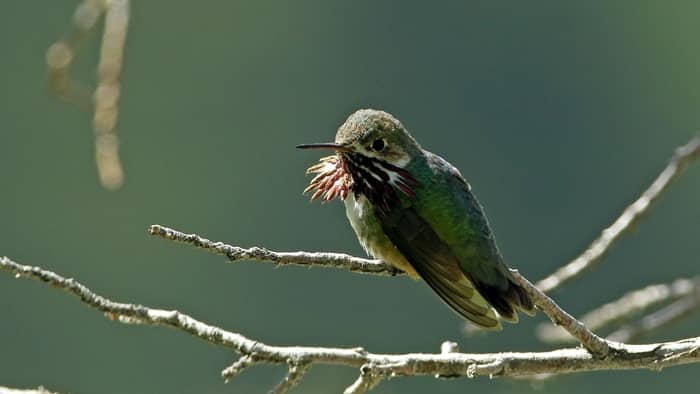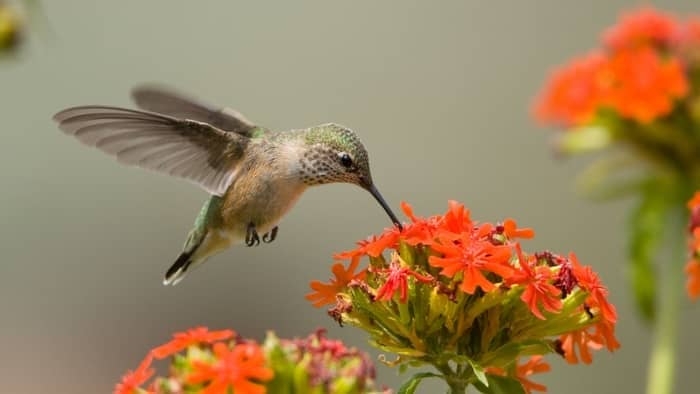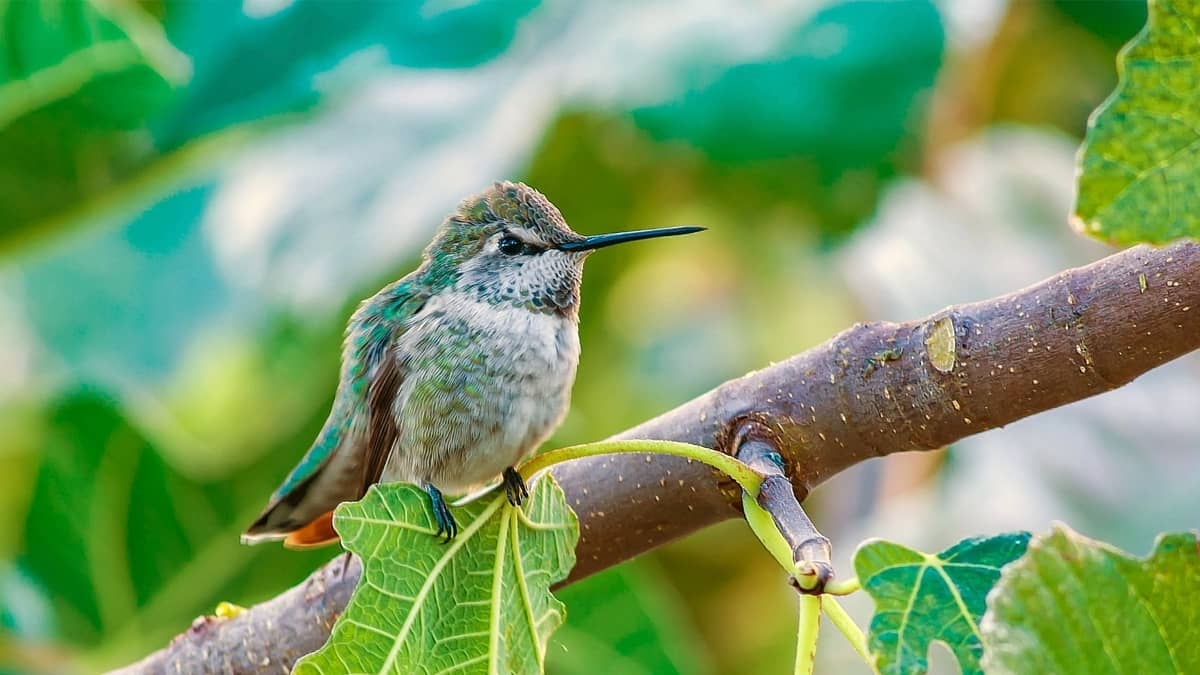Maine is known for cold and snowy winters, which can be challenging for the local wildlife, so you probably wonder when do hummingbirds leave Maine. With the winter temperatures ranging from 25°F to 15°F, what hummingbird will stay behind? Surprisingly, hummingbird season in Maine doesn’t end when most Ruby-throated hummingbirds migrate to a warmer climate. Some of them are adapted to the cold winter climate and can be seen year-round.
When Is Hummingbird Season In Maine
The first sign of spring stirs the question: when will we spot the first hummingbirds in Maine? The hummingbirds which are expected to migrate to Maine start their journey from Mexico and Central America. Since Maine is further north, hummingbirds take longer to reach their destination. They travel only during daylight. Hummingbirds commence their trip of over 2,000 miles in February and come to Maine at the beginning of May.
The first sight of a male Ruby-throated hummingbird marks the beginning of the season. The males usually arrive first, followed by the females a week or two later You can recognize male Ruby-throated hummingbirds by their white-collar, greenback, and forked tail. The females have the same back, without the collar and tail feathers with grey-green, white, and black bands.
How Long Do Hummingbirds Stay In Maine
We know when we can expect their arrival, but when do hummingbirds leave Maine? After their arrival in spring, hummingbirds in Maine resort to bonding and mating. A male hummingbird can mate with several females.
Since hummingbirds are highly territorial, the female picks a nesting spot far from the male. It takes 1 to 10 days to build the nest. After that, she will pick trees with rough barks or shrubs and set up her nest at a height between 2 to 50 feet.
Mid-summer, you can notice a small hammock-like greyish sack hanging from a tree branch. To hatch faster, they require stable food sources and warmth. The eggs stay in the bag two weeks up to a month before they hatch. Then, after barely 12 days, the baby hummingbirds are independent and ready to fledge. This marks the start of the last leg of hummingbird season in Maine.
Learn more about How To Make A Hummingbird Feeder Tube – Step By Step Guide
When Do Hummingbirds Leave Maine?
Hummingbird season in Maine is short. Preparations begin the first weeks of September when hummingbirds start storing fat for their long journey. The males leave Maine starting September 30. The females and juniors follow two weeks later. They fly over 600 miles across the Gulf of Mexico to their winter habitat.

When Do Hummingbirds Return To Maine
The Pine Tree State is not left without a single hummingbird during winter. You can spot some Ruby-throated and Calliope hummingbirds even with the freezing temperatures in winter.
However, the majority of the hummingbird population returns to Maine once again in the middle of spring. They come back to mate, nest, and raise their young. To encourage their habituating around your garden, prepare in advance.
Put out feeders, plant bright flowers, shrubs, and trees that hummingbirds devour. Closer observation has noticed visitors that accidentally migrate to Maine. Stranded in the cold with a lack of food after a long journey, they will start looking for resources.
Not many hummingbird plants bloom in May. When they return back to Maine, hummingbirds resort to feeding on tree sap and small insects.
The Best Time To Spot Hummingbirds In Maine
Dusk and dawn are the hummingbird’s favorite parts of the day. When it comes to location, they enjoy a mix of shaded and sunny spots. They’re specifically active in the evenings, so set up your feeders and flowers near your porch and enjoy the view.

Migrating Season
The arrival of the hummingbirds is on every avid birdwatcher’s list. Even though hummingbirds travel separately, this is the time when you can notice more of them – whether around your flowers and feeders. Sometime around the middle of the summer, after they mate and nest, the females are harder to spot as they care for the young.
A very interesting kind you can spot in Maine is the Calliope hummingbird. It’s qualified as the smallest breeding hummingbird in the US. The Pine Tree state is attractive to this hummingbird, as they prefer meadows and forests. It’s possible to spot it while birdwatching in the woods, not only in your garden. When other hummingbirds leave Maine, the Calliope migrates to pine and oak forests in Mexico.
How To Attract The Hummingbirds In Your Garden
- Put out several hummingbird feeders in April, right before their arrival.
- Plant native plants that have blooms full of nectar. Bee balm, salvia, and honeysuckle are just a few of them.
- Hummingbirds don’t drink water, but they will use it to clean themselves. Set up dishes with circulating water near the feeders.
- Since you know hummingbirds come to Maine to mate and nest, provide some nesting materials for them. Look for cotton plants and pick the unprocessed cotton from the flower. Artificial materials and processed cotton won’t work.
- Draw more insects to your garden. Hummingbirds eat almost their weight in food every day. It’s important to provide as much nutritious food and security if you want to see them humming around your garden.
- Leave a filled feeder out throughout the whole year. Hummingbirds won’t forget to migrate if you provide food. But you can attract and feed some lingering passerby.
Bottom Line

Maine is not as conveniently located for the migrating hummingbirds as other states, so the travel journey takes them longer. They arrive in May and leave the last week of September. As a result, the hummingbird season in Maine is shorter compared to other states.
Any hummingbird that’s spotted after the middle of October is here to stay the winter. However, some accidentally migrate to Maine, so providing a feeder is an excellent option to spot a winter hummingbird.
Have you spotted some hummingbirds in Maine? Do you do something special to attract more into your garden?

